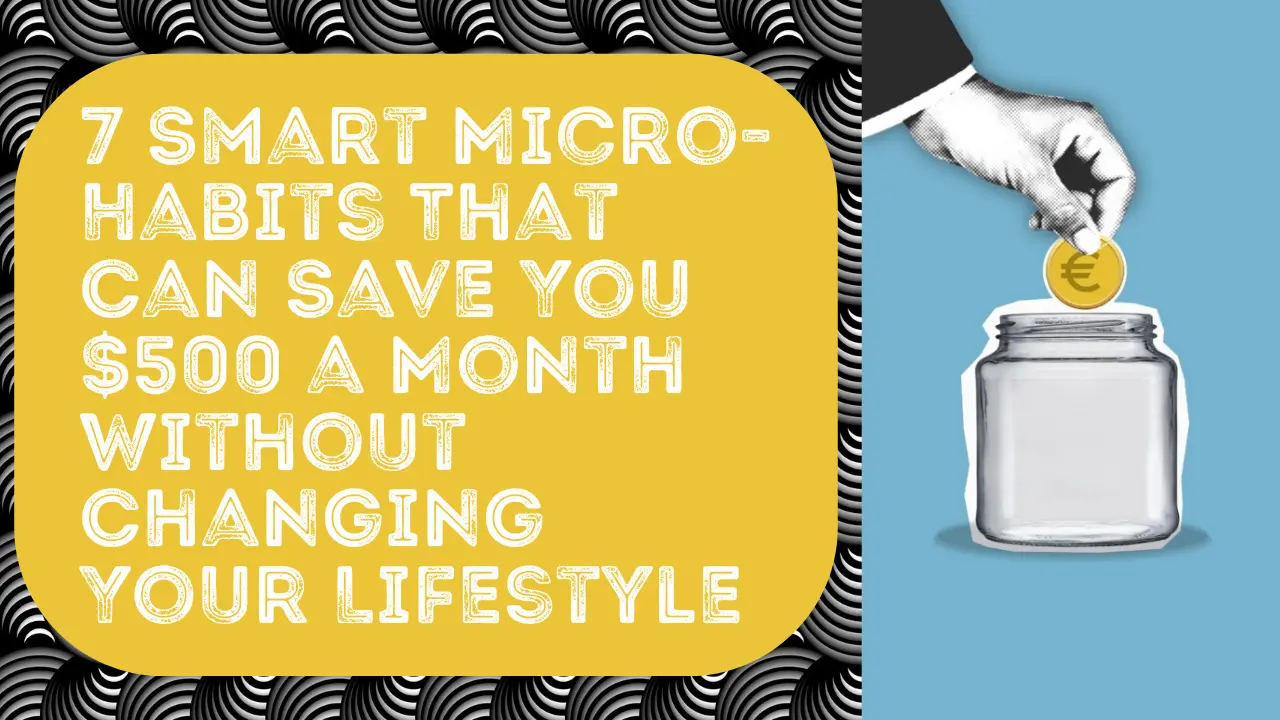If you’re like most people, the idea of saving money feels like a big sacrifice — no coffee runs, no nights out, no little treats. But personal finance doesn’t have to be boring or painful.
The truth is, you can cut your expenses without really changing your lifestyle just by adopting a few money saving habits that blend into your daily routine.
Here are 7 micro-habits that could put $500 or more back into your budget every single month.
1. Brew Your Own Morning Coffee ☕
Think about it: you grab a latte for $5 every weekday, that’s about $100 a month just on coffee. Now multiply that over a year — you’ve spent $1,200 on caffeine.
Making coffee at home costs about $0.50 a cup and takes only 5 minutes. You can buy flavored syrups or even a milk frother to make it feel like your favorite café drink. Not only will you save money, but you’ll also control the sugar and calories.
Estimated savings: $80–$100/month
2. Automate a “Hidden” Savings Transfer 💰
Here’s one of the smartest budgeting hacks: make your savings invisible.
Set up your bank app to automatically transfer $10–$20 daily into a separate savings account (preferably one without a debit card).
When money moves automatically, you don’t miss it. By month’s end, you’ll have $300–$600 saved without lifting a finger.
Pro tip: Use a high-yield savings account so your money earns interest too.
Estimated savings: $300/month
3. Use a Cashback App for Everyday Purchases 📱
Whether you shop online or in-store, cashback apps like Rakuten, Ibotta, or Honey can give you 2–10% of your spending back.
For example, if your grocery bill is $400 and you fill your gas tank twice a month for $100 each, that’s $500 total. With just 5% cashback, you’re getting $25 back every month — basically free money.
Some apps also stack with store coupons, doubling your savings.
Estimated savings: $20–$80/month
4. Cancel One Subscription You Barely Use 📺
How many subscriptions do you have right now? Netflix, Amazon Prime, Spotify, gym memberships, premium apps… sometimes we pay for stuff we haven’t used in months.
Go through your credit card statement and cancel at least one or two unused services. You can always resubscribe later if you really miss it.
Estimated savings: $15–$50/month
5. Meal Prep Twice a Week 🍲
Takeout and delivery are convenient, but they drain your wallet. If one meal costs $18 and you do that three times a week, that’s over $200 a month.
Cooking in bulk twice a week — like Sunday and Wednesday — saves time and money. You can make pasta, curry, or stir-fry in big batches and store portions in the fridge or freezer.
Not only do you save cash, but you also eat healthier.
Estimated savings: $60–$120/month
6. Buy Generic Instead of Brand Name 🛒
Most store-brand products are made in the same factories as the brand names — they just have different labels.
Switching to generics for basics like rice, flour, snacks, and cleaning products can save you 30–50% without any noticeable difference in quality.
If your grocery bill is $300, even a 20% cut means $60 saved.
Estimated savings: $50–$70/month
7. Switch to Energy-Saving Habits at Home 💡
Small tweaks in your home can lower your utility bills:
- Unplug chargers and devices when not in use.
- Run laundry in cold water.
- Use LED bulbs instead of old incandescent ones.
- Set your thermostat a degree lower in winter or higher in summer.
These small steps could cut $15–$30 off your electricity bill every month.
Estimated savings: $15–$30/month
Adding It All Up
Here’s the math if you try most of these:
| Habit | Monthly Savings |
|---|---|
| Brew coffee at home | $100 |
| Hidden savings transfer | $300 |
| Cashback apps | $50 |
| Cancel unused subscription | $30 |
| Meal prep | $80 |
| Buy generic | $60 |
| Energy-saving habits | $20 |
| Total | $640/month |
That’s over $7,000 a year — all without giving up the things you love.
Final Thoughts
Saving money doesn’t mean you have to live a boring life. It’s about making smarter choices that fit into your daily routine.
Pick just 3 of these personal finance micro-habits and start today — your bank account will thank you later.

